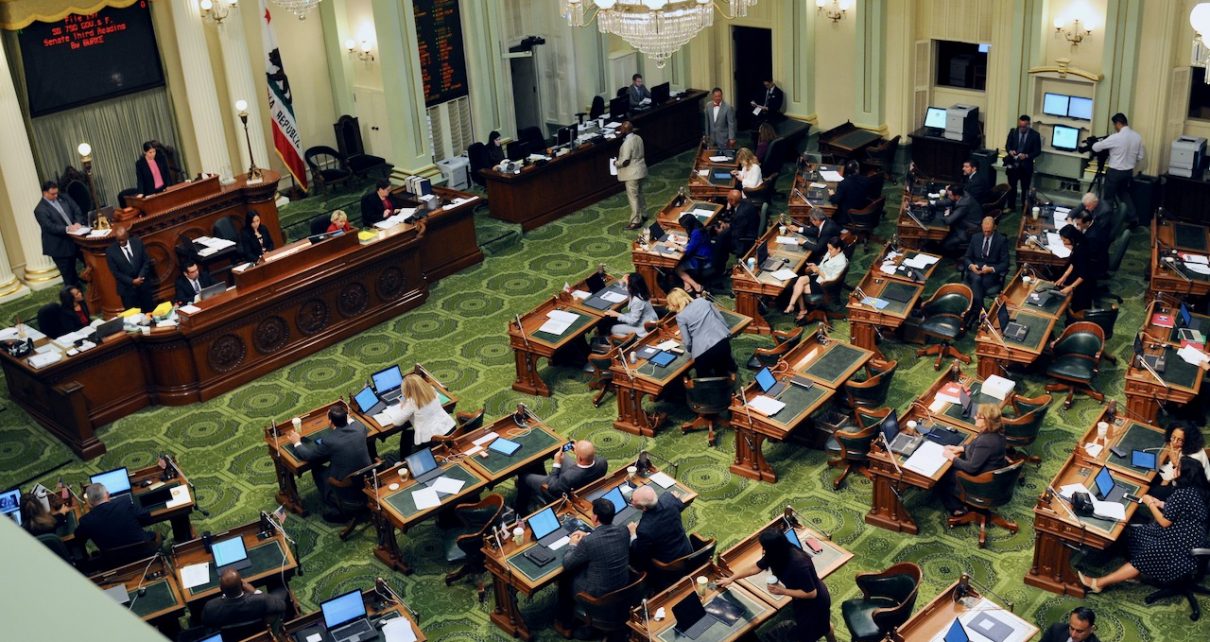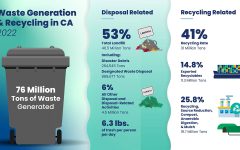
California State Assembly Chamber. (Photo: Kevin Sanders for California Globe)
Ringside: Ways California Can Have Abundant Energy
Californians should be accessing more natural gas and gasoline from local sources
By Edward Ring, October 24, 2024 2:55 am
 With the right combination of new policies in California, abundant energy ought to be just around the corner. Nearly all new energy development can be privately financed, and it can be delivered while creating tens of thousands of high paying jobs. But for this to happen, California’s state legislators will need to accept the following premises:
With the right combination of new policies in California, abundant energy ought to be just around the corner. Nearly all new energy development can be privately financed, and it can be delivered while creating tens of thousands of high paying jobs. But for this to happen, California’s state legislators will need to accept the following premises:
- Abundant and affordable electricity cannot be rapidly achieved without maintaining a significant role for natural gas.
- It is not feasible to convert 100 percent of California’s energy consumption to electricity.
- Cost-effective and abundant carbon-neutral combustible sources of non-electrical energy are still several years off, if not decades.
- It is pointless to dismantle our own natural gas and oil extraction capacity if we’re going to just import it anyway.
With those points to ponder, here are some numbers. Today, California’s total annual energy inputs are roughly 7,000 trillion British Thermal Units (TBTUs), with about half of that coming from petroleum, and another 30 percent from natural gas. To express that amount in the form of electricity, 7,000 TBTUs is roughly equivalent to 2 million gigawatt-hours (GWH). Currently, our in-state generating capacity is about one-tenth of that.
The quantity of energy that is converted into actual energy services in California – end-user consumption realized in the form of automotive horsepower, residential heating and cooling, light, communications, computing, etc. – is only 2,500 about TBTUs. The rest is lost in conversion and transmission. The case for electrification wherever possible is because of its higher efficiency converting energy inputs into energy services. For example, EVs with onboard batteries, taking into account the charge/discharge cycle of the battery and regenerative braking, convert electricity into traction at an efficiency of around 80 percent. It is rare for any vehicle with an internal combustion engine to achieve better than 40 percent efficiency.
The point here isn’t to proselytize for EVs, but rather to emphasize the tremendous benefit of adopting new and more efficient technologies. If Californians embrace energy efficiency technologies in all their forms, best case, we might be able to enjoy the same quantity of energy services on a total energy input budget of half what we need today; around 3,500 TBTUs, or just 1 million gigawatt-hours of electricity.
Here, then, are ways to create energy abundance in California:
- Incentivize owners of EVs and hybrids to use vehicle-to-grid technology to store surplus electricity from the grid and sell it back during periods of high demand. If only 10 percent of California’s automotive fleet were EVs, they would have a cumulative storage potential of 80 gigawatt-hours (GWH), more than enough to make utility scale electricity storage unnecessary.
- Incentivize private property owners to install photovoltaics and sell their surplus electricity to the grid. If all of California’s more than 10 billion square feet of usable rooftop space were covered with photovoltaics (that doesn’t include parking lots and other private urban spaces), it would generate about 275,000 GWH per year.
- Retrofit or replace California’s fleet of natural gas power plants to achieve 60 percent efficiency, or more. New combined cycle technologies may have the potential to deliver efficiencies up to 70 percent, and California should be pioneering this technology for the world to emulate.
- Stop using natural gas power plants intermittently and operate them again to deliver baseload power. If this were done with existing plants, it would increase their output from roughly 100,000 GWH per year to 250,000 GWH per year.
- Revive nuclear power in California. This can be achieved with large scale modern reactors, small modular reactors, or a combination of both, but set a target of at least 125,000 GWH per year. As a point of reference, Diablo Canyon’s two reactors deliver around 18,000 GWH per year.
- Through a combination of existing and new geothermal, biomass, and hydroelectric projects, produce an additional 50,000 GWH per year.
Most of these undertakings can be private, unsubsidized, and accomplished without consumer mandates – all of which is possible if the regulatory burden is reformed so total project costs are no longer artificially doubled or even tripled. If these projects were completed, they could potentially catapult California’s electricity production to over 700,000 gigawatt-hours per year, more than three times what is currently produced in-state, and more than twice what is currently consumed. This scenario doesn’t even take into account utility scale solar or wind generated electricity. Offshore wind should be avoided in any case because it is a financial scam and an environmental abomination.
The positive ramifications of this much electricity are immense. Electricity would be so cheap that California could again attract manufacturers, it could develop further as a hub for AI and other electricity-intensive applications, and, crucially, it could potentially offer something completely out of reach today: affordable fuel for EVs. Moreover, with EVs and hybrids replacing utility scale battery farms, and private, urban photovoltaic arrays replacing remote utility scale solar farms, the transmission grid upgrades necessary for California to go electric would be minimized.
Meanwhile, however, 700,000 GWH per year will only deliver a bit more than half the energy Californians are likely to require in the future, even if extraordinary gains in efficiency are realized. To fill the gap, combustible fuel will remain necessary, particularly in California’s transportation and industrial sectors. Carbon neutral solutions are not going to be immediately available at the necessary cost and scale.
For these reasons, Californians should be accessing more natural gas and gasoline from local sources. There is no economic or environmental justification for us to import 75 percent of the petroleum we consume. We have the option to revive in-state oil production significantly, then draw it down on a reasonable timetable of 20-30 years, all the while perfecting the cleanest, most environmentally responsible practices in the world. And as electricity becomes extremely cheap and abundant, market forces will impel a transition away from fossil fuel, instead of scarcity inducing mandates.
Similarly, we should be tapping our abundant reserves of natural gas. The energy reality in California today is that 80 percent of our fuel input still comes from oil and gas. Figuring out how to extract it and use it in the cleanest and most efficient manner possible is better than harming our own people by precipitously abolishing its use. It is also an example we can set for other nations that aren’t about to stop using these fuels.
If they can recognize the priorities of other nations as well as the obligations they have to working Californians, our state legislature has a stupendous opportunity. They can make California a place where energy is clean, affordable, and abundant throughout the multi-decade transition to what may eventually be a carbon neutral future. And they can restructure our laws and regulations to empower the private sector to provide most of the investment.
- Ringside: EVs and California’s Future Demand for Electricity - December 4, 2025
- Ringside: Politically Viable Water Supply Projects - November 27, 2025
- Ringside: Shifting Costs Does Not Solve California’s Electricity Shortages - November 20, 2025





If you use your electric car to power the grid how will you drive to work or go to the store? I guess you will need a back up gasoline car just like the solar farms need back up natural gas generators when they cannot produce power.